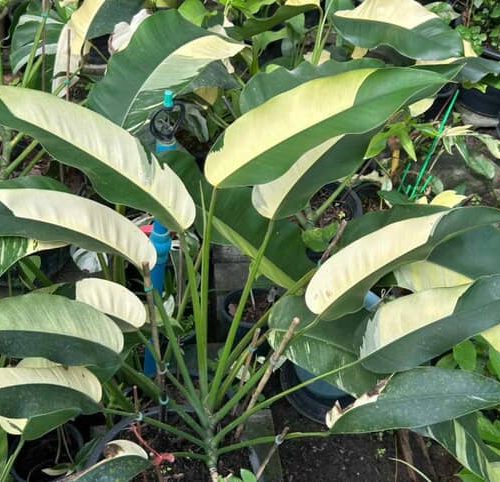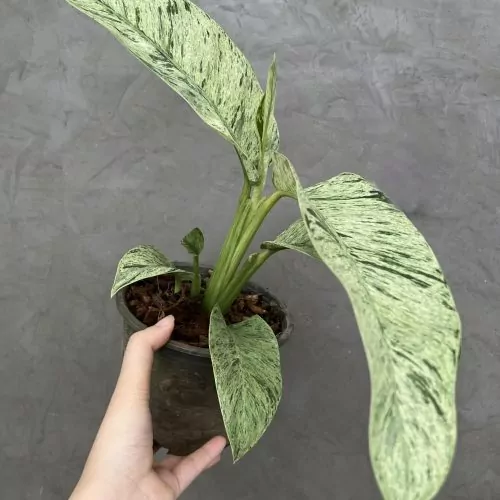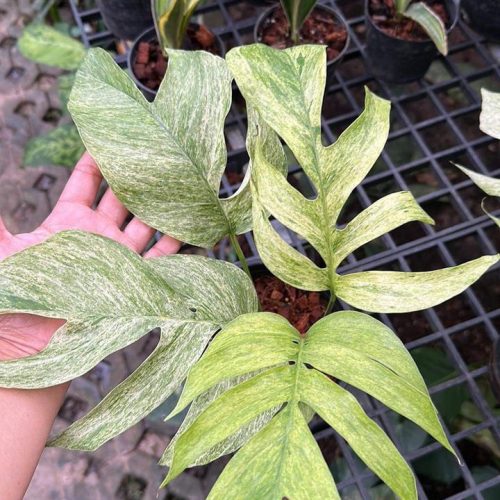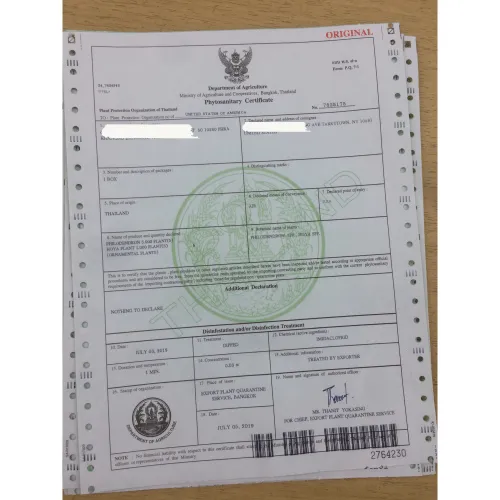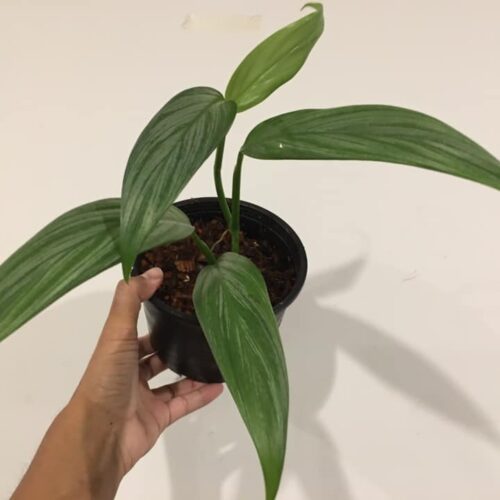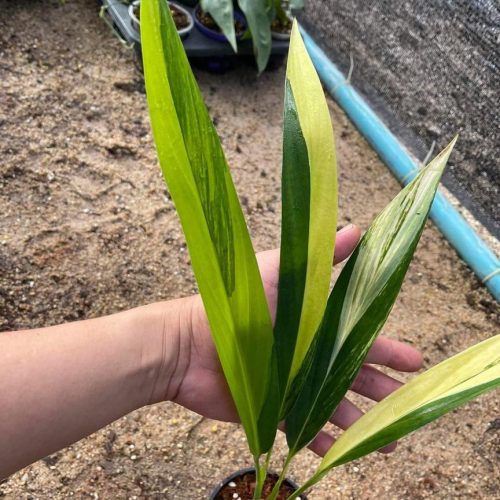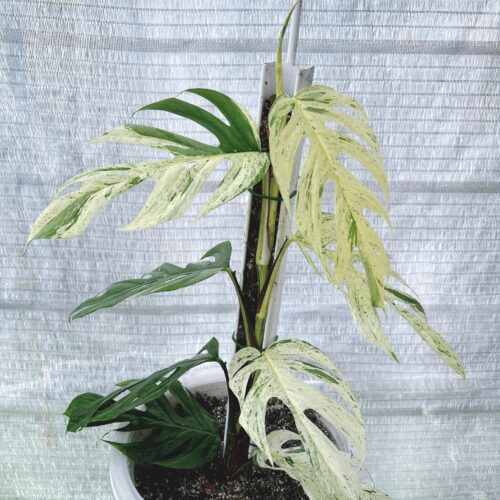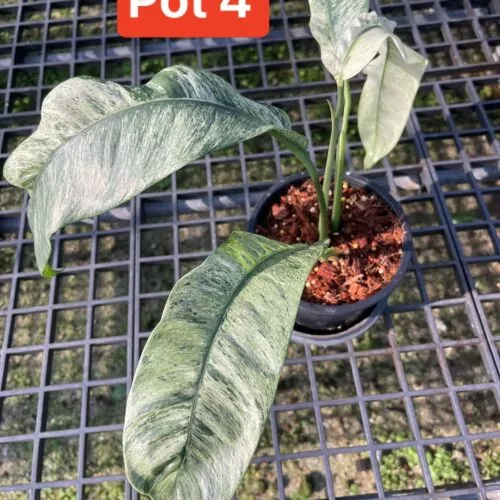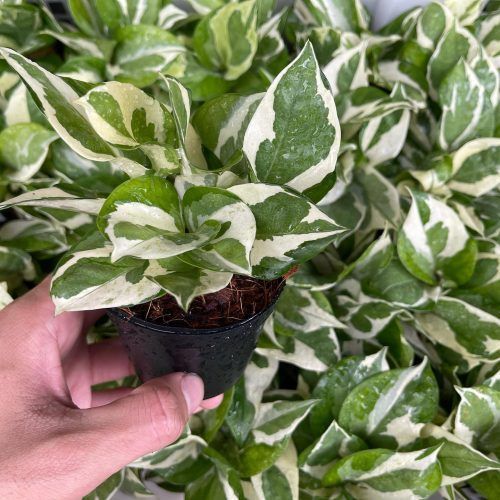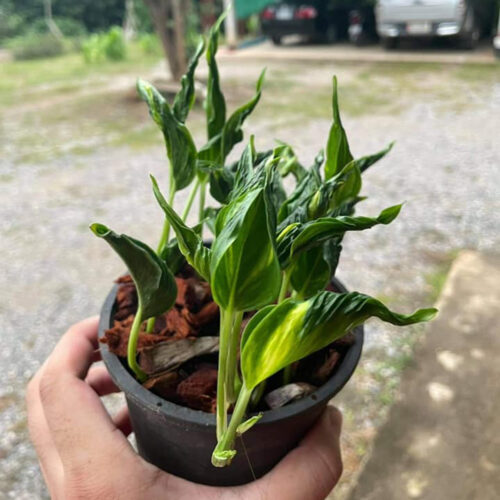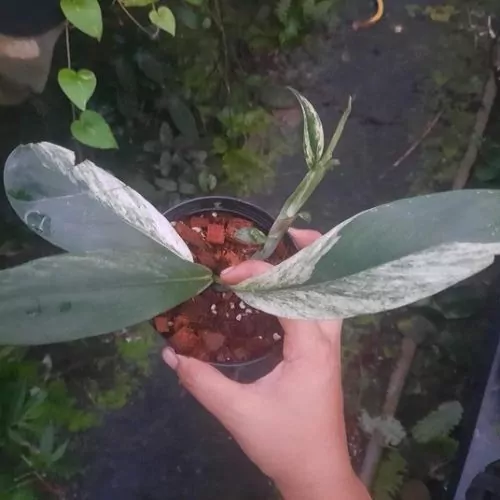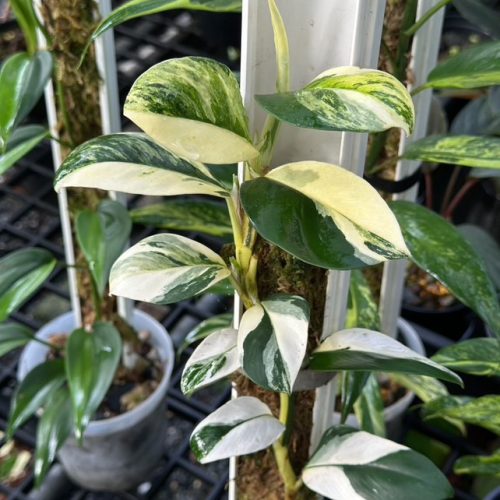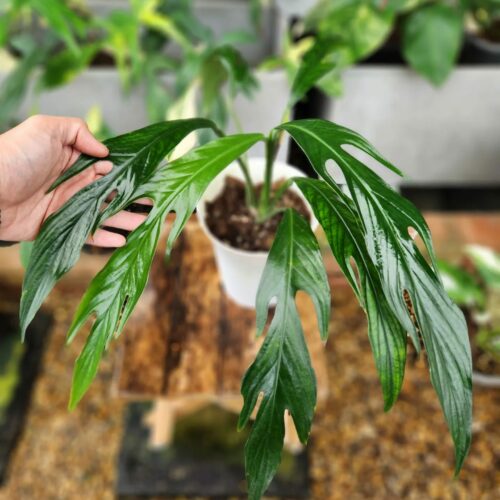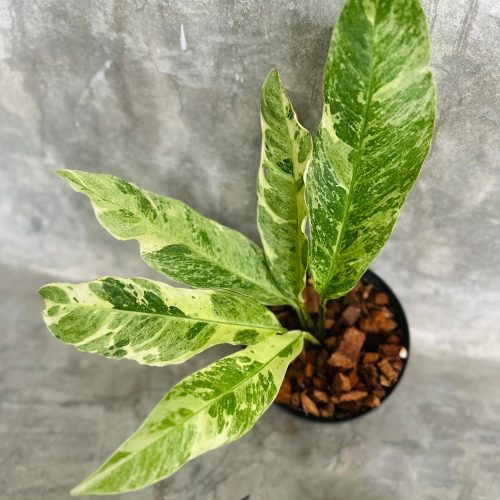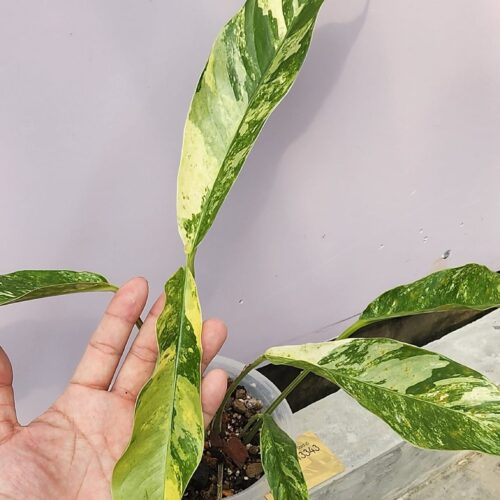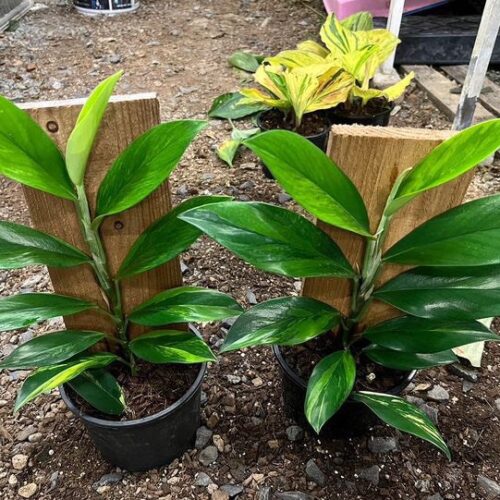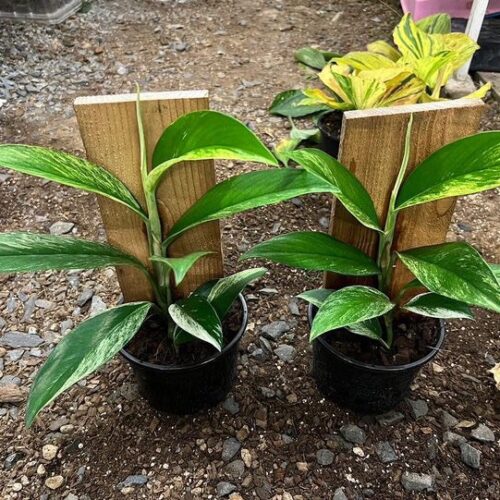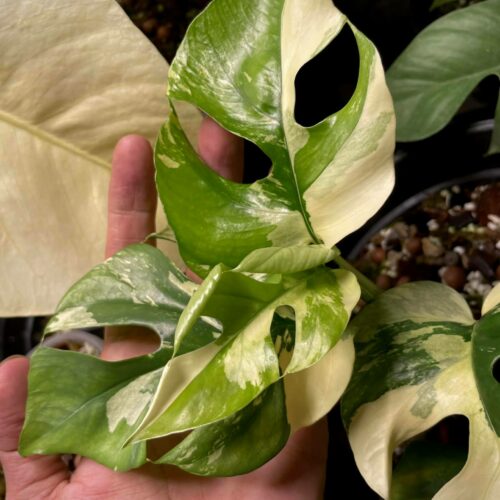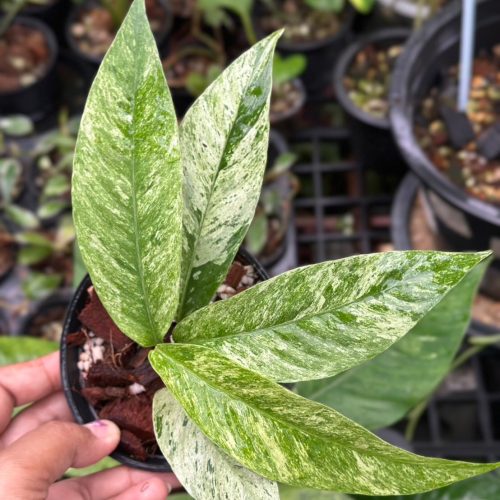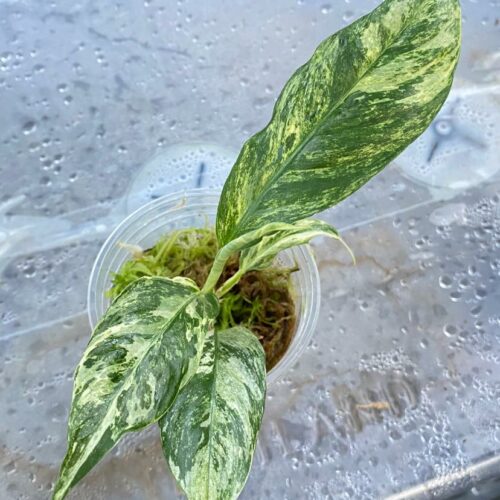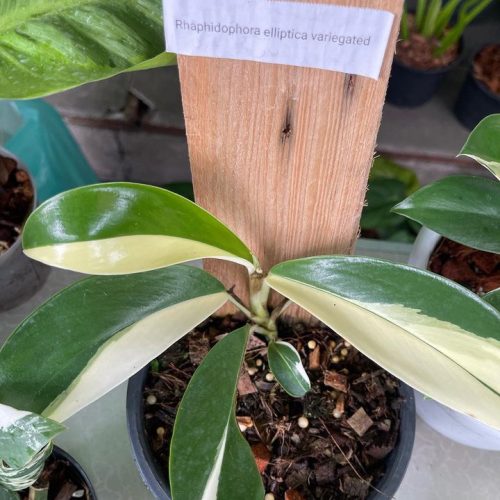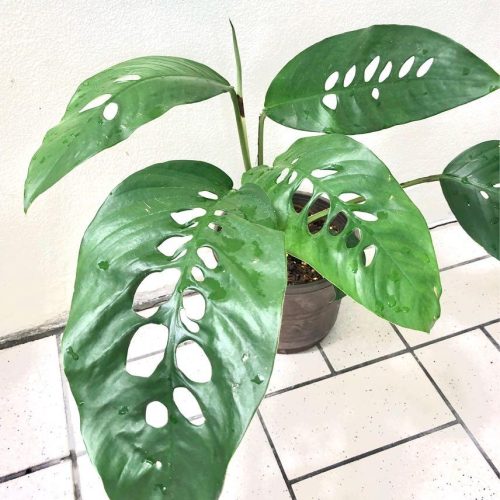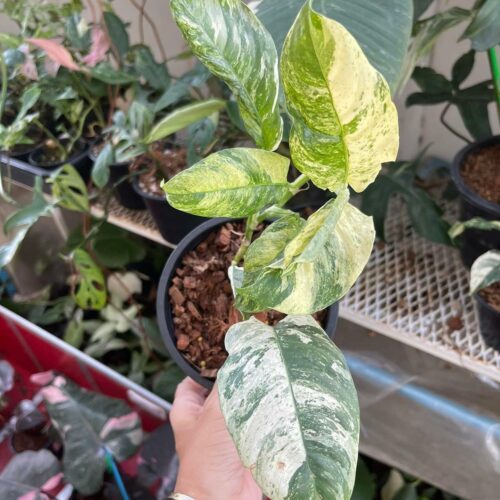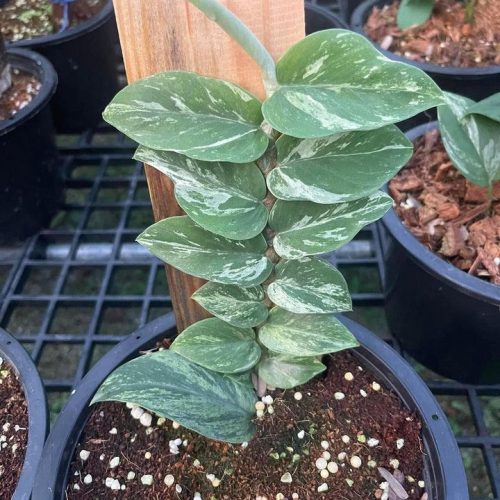The Rhaphidophora genus includes some of the most captivating and unique plants you can add to your indoor garden. Known for their striking foliage and climbing habits, Rhaphidophora varieties can transform any space into a lush, green oasis. This guide explores different Rhaphidophora varieties, their care requirements, and tips for growing them successfully.
Introduction
Rhaphidophora plants are members of the aroid plant family, which also includes popular varieties like Philodendron, Monstera, and Anthurium. Native to tropical regions, these plants are prized for their beautiful, fenestrated leaves and vigorous growth. Some popular Rhaphidophora varieties include Rhaphidophora tetrasperma, Rhaphidophora decursiva, and Rhaphidophora foraminifera.
Rhaphidophora Tetrasperma
Overview
Rhaphidophora tetrasperma, also known as Mini Monstera or Philodendron Ginny, is arguably the most popular Rhaphidophora houseplant. This vining aroid gets its common name “Mini Monstera” from its leaves which resemble a smaller version of the iconic split leaves of Monstera deliciosa.
Rhaphidophora tetrasperma is native to Southern Thailand and Malaysia. In its natural jungle habitat, it climbs up tree trunks. As a houseplant, it remains a manageable size, climbing up supports or trailing attractively from a hanging basket.
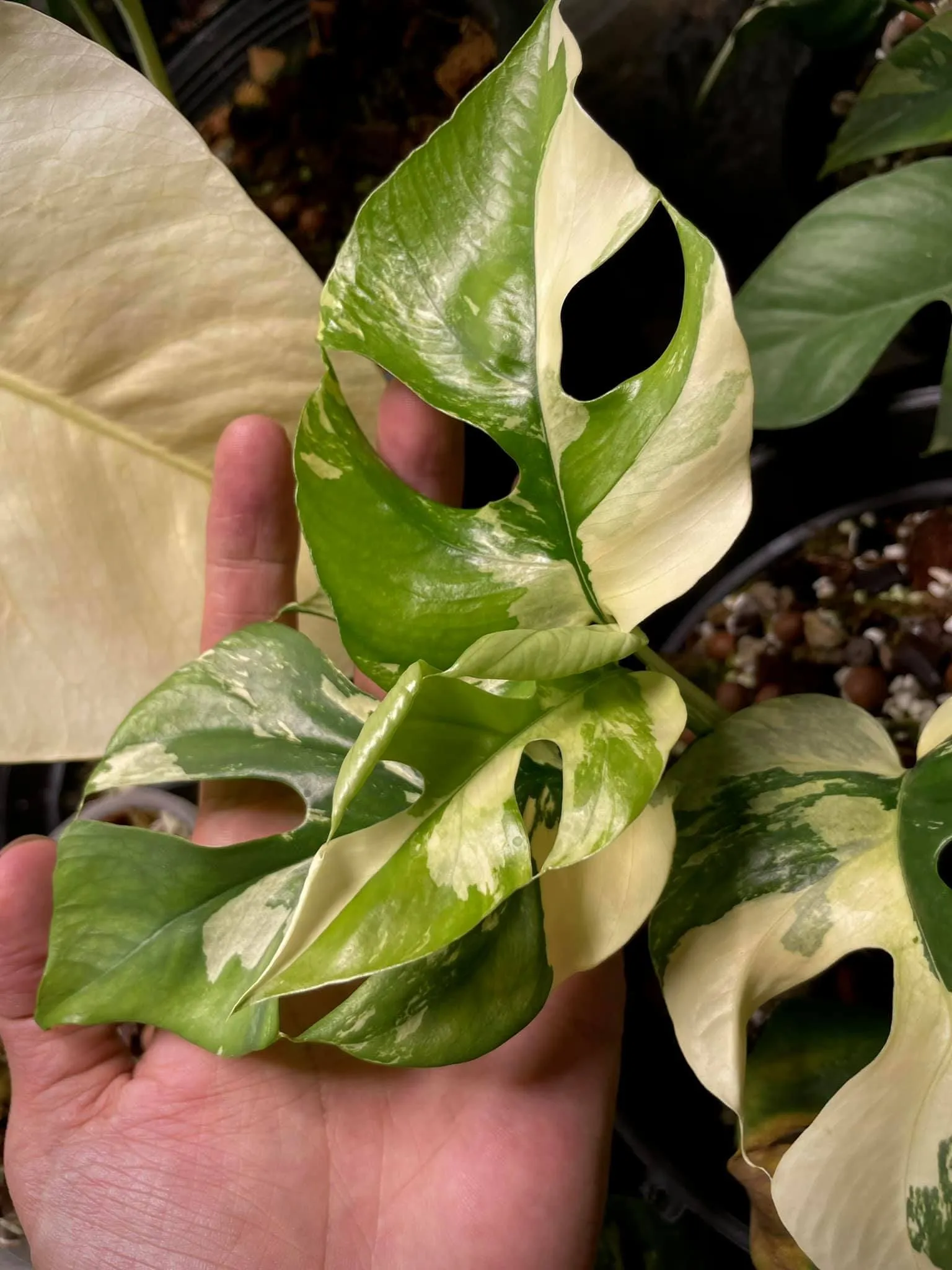
Identifying Features
Rhaphidophora tetrasperma has slender green stems with nodes holding its horizontally oriented leaves. The leaves start out entire and develop slits and fenestrations as they mature. Mature leaves have one to three deep cut sections. Leaf color ranges from medium to dark green with a matte texture.
New leaves emerge wrapped in a sheath called a cataphyll. As the leaves develop, they unfurl and the cataphyll falls away. The leaf shape becomes distinct once unfurled with the characteristic splits coming into view.
This Rhaphidophora produces small greenish-white flowers. However, it rarely blooms as a houseplant.
Growing Conditions
Rhaphidophora tetrasperma thrives in bright, indirect sunlight. It also does well in partial shade, making it a highly adaptable houseplant. Avoid direct hot sunlight which can scorch its leaves.
Water whenever the top inch or two of soil becomes dry. Allow soil to dry out slightly between waterings. High humidity encourages larger, more fenestrated leaves. Average room humidity is adequate, but you can mist the plant periodically for added moisture.
Use a well-draining potting mix and provide a moss pole, small trellis, or similar vertical support for the stems to climb. Fertilize monthly in the growing season with a balanced houseplant fertilizer.
Rhaphidophora Cryptantha
Overview
Rhaphidophora cryptantha is another climbing aroid that makes a superb houseplant. Its oval-shaped leaves emerge with a bright red color before fading to green as they mature. The striking color contrasts make this plant a standout.
In nature, Rhaphidophora cryptantha is found climbing high up into the forest canopy in Thailand, Malaysia, Singapore, and Sumatra. As a houseplant, it stays more compact.
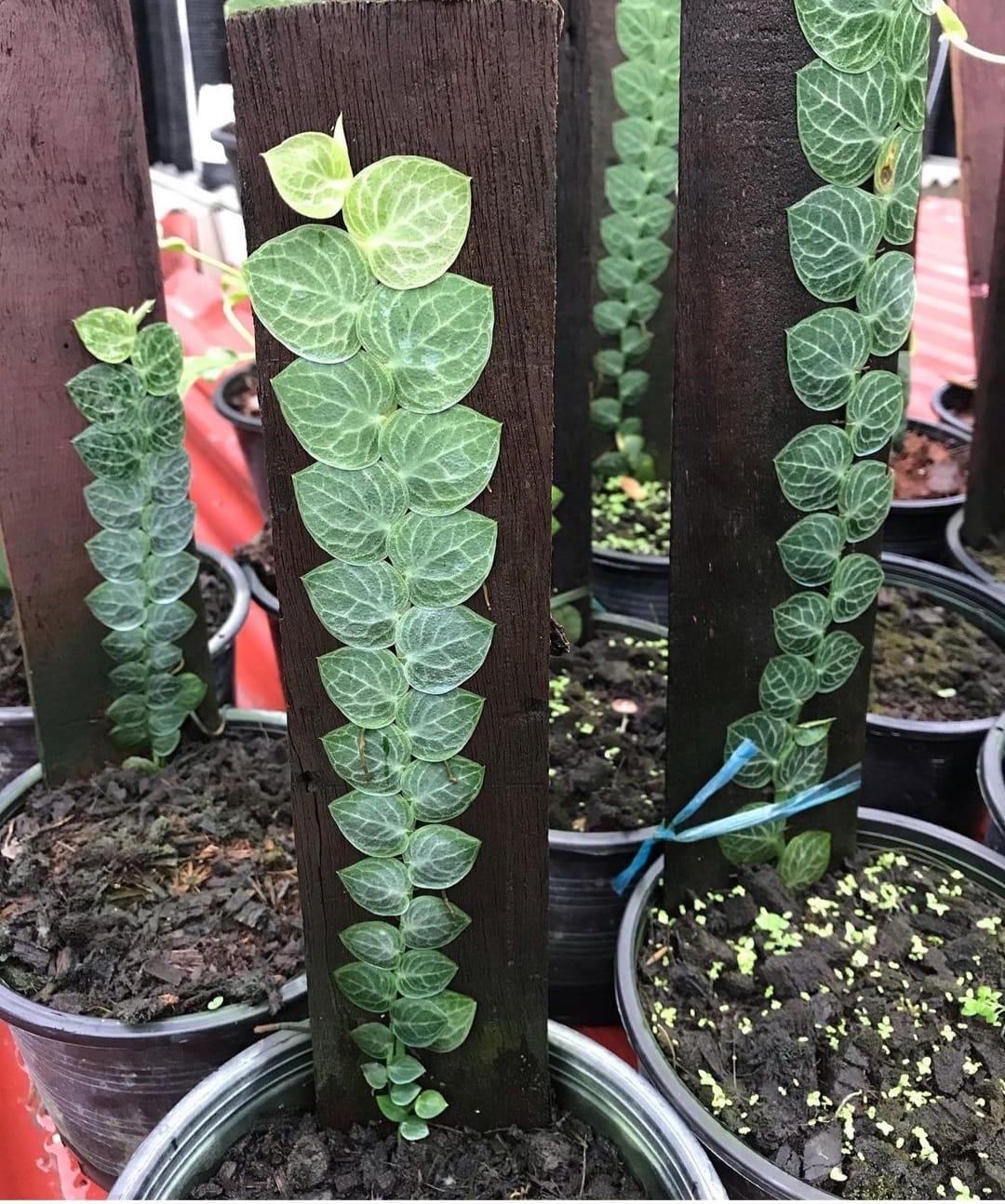
Identifying Features
The most distinctive feature of Rhaphidophora cryptantha is the coloring of its foliage. New leaves emerge in a vivid cherry red color. As the leaves mature over several weeks, they change to dark green with just a hint of the red hue remaining along the veins and edges.
The leaves have an oval lanceolate shape. They start out entirely whole, only developing fenestrations later on mature leaves. The leaf shape takes on an elongated heart-like form once slits develop.
When Rhaphidophora cryptantha blooms, it produces a pale green spathe and spadix typical of aroids. However, flowering is quite rare indoors.
Growing Conditions
Rhaphidophora cryptantha grows well in bright indirect sunlight or partial shade. Avoid direct sunlight which can burn its foliage.
Use a well-aerated potting mix and provide a support for the vining stems to climb upwards. Water when the top inch of soil becomes dry, allowing the soil to dry out somewhat between waterings. Mist occasionally to boost humidity around the plant.
Average room temperatures between 60-80°F are suitable. Fertilize monthly during the growing season. Re-pot every 2-3 years as needed when the roots have filled out the container.
Rhaphidophora Hayi
Overview
Rhaphidophora hayi is an unusual vining aroid prized for its very large, incredibly lobed leaves. As its long leaves mature, they develop dramatic splits and fenestrations, looking almost lace-like. Native to Borneo, it grows in tropical forests climbing high up tree trunks to reach sunlight.
With proper care and maturity, Rhaphidophora hayi leaves can grow to over three feet long as houseplants. Their huge leaves and rapid growth make them statement showstopper plants.
A compilation of the Rhaphidophora species that are in high demand in 2023

Identifying Features
Mature Rhaphidophora hayi leaves are truly massive in size, easily reaching 18 inches across or larger. The leaves start out small and entire, oval to heart-shaped. As they age, leaf cuttings become deeper and more numerous. Fully developed leaves have very deep sinuses and slender divisions between the sharp lobes.
Leaf coloration is a semi-glossy medium green. The long petioles attach alternately along the slender green vining stems.
While Rhaphidophora hayi may occasionally flower indoors, its blossoms are not showy. Small greenish spathes with cream spadix emerge where leaf stems attach to vines.
Growing Conditions
Provide brightly diffused light for your Rhaphidophora hayi plant. Some direct sun is beneficial but avoid prolonged hot sunlight on its foliage.
Use a chunky, moisture-retentive potting mix. Water whenever the top inch of soil becomes dry, allowing soil to dry out moderately between waterings. Mist frequently to maintain high humidity around its large leaves.
Rhaphidophora hayi grows quickly and needs adequate nutrients. Fertilize every 2-3 weeks during the growing season using a balanced houseplant fertilizer diluted to half strength.
A sturdy vertical support structure is essential for the heavy vining growth to climb upwards. Use a moss pole, strong plant stakes affixed to the pot, or secure vines to hooks on the wall to avoid breakage.
This care routine is also beneficial for plants like Epipremnum and Aglaonema.
Rhaphidophora Decursiva
Overview
With its huge, violin-shaped leaves covered in silver flecks, Rhaphidophora decursiva certainly earns its common name of Fiddle Leaf Philodendron. This eye-catching vining plant is a tropical forest aroid hailing from Malaysia and Western Sumatra.
Rhaphidophora decursiva grows vigorously, easily climbing over 15 feet high in its native habitat. As houseplants, regular pruning helps maintain a more reasonable size. But be prepared for substantial vining growth to manage over time from this fast grower.
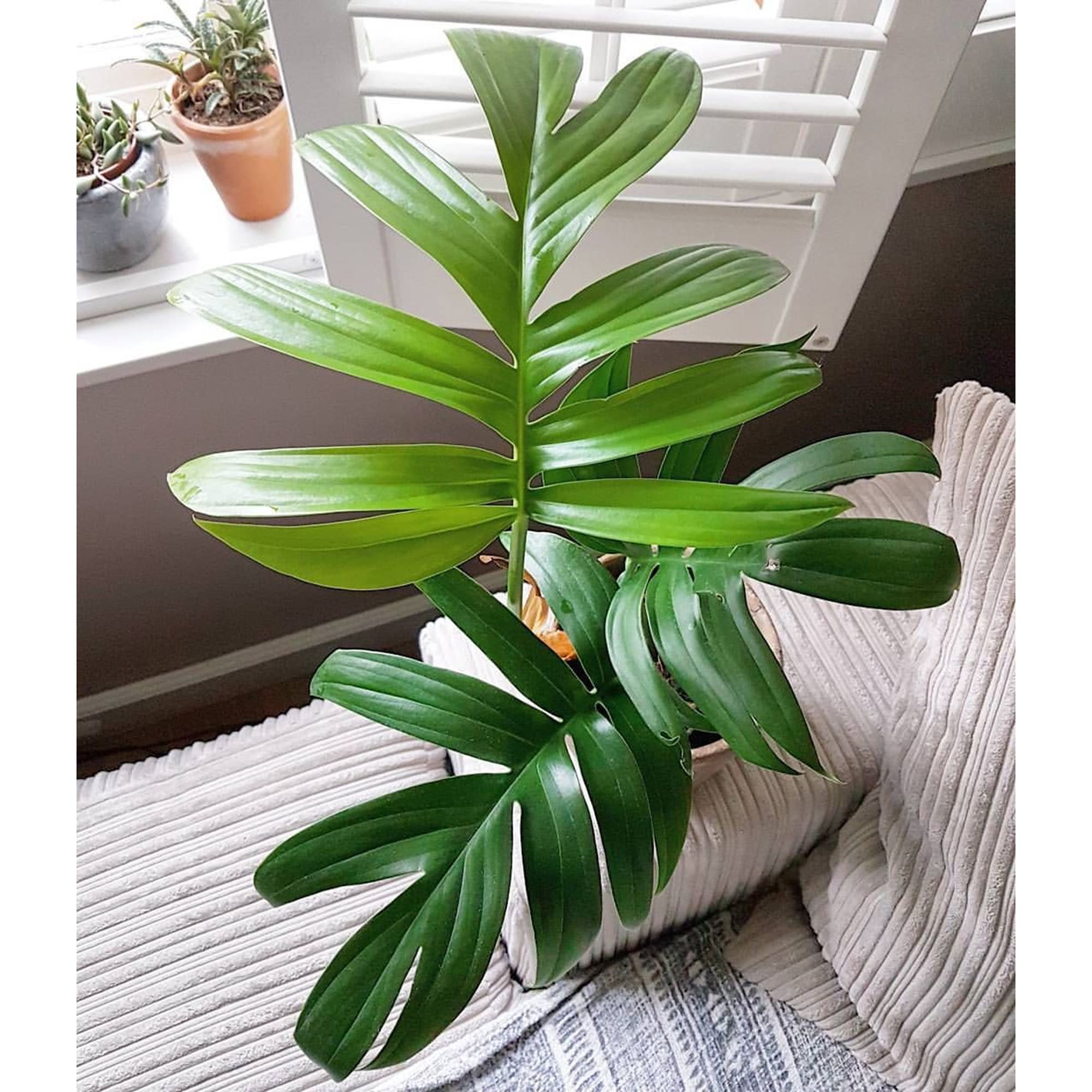
Identifying Features
The most dramatic feature of Rhaphidophora decursiva is undoubtedly its leaves. The large leaves start out heart shaped. As they mature, the leaves become deeply lobed, developing slender finger-like projections resembling an open fiddle. The narrow leaflets give the foliage an airy, delicate appearance belying its extremely rapid growth rate.
Mature leaves may reach 18 inches long by 12 inches wide. Their coloring is primarily a semi-glossy medium green with striking silver variegation along the midribs and veins. The long trailing stems have nodes for aerial root formation.
Small greenish spathes with cream spadix can emerge where leaf stems attach to vines. But flowers are uncommon with indoor cultivation.
Growing Conditions
Rhaphidophora decursiva thrives in bright, indirect light with some direct morning sun exposure. Insufficient light leads to smaller leaves and slower growth.
Use a chunky potting mix amended with orchid bark or perlite for drainage. Provide sturdy vertical supports early on for the quickly climbing vines. Trim back aggressively when stems become overly long and tangly.
Water whenever the top inch of soil becomes dry. Allow soil to dry moderately between waterings. Mist frequently to maintain high humidity around this tropical jungle plant.
Fertilize every 2 weeks during the growing season using a balanced liquid fertilizer diluted by half. Repot every year in early springtime to provide room for the rapidly expanding root system.
High humidity levels, similar to those needed for Syngonium and Homalomena, will help this plant thrive.
Rhaphidophora species are the most sought after by aroid plant lovers
Other Rhaphidophora Varieties
There are still many other Rhaphidophora varieties being newly discovered or introduced as houseplants. Some additional types gaining popularity include:
- Rhaphidophora pertusa – Deeply lobed leaves sprinkled with white flecks
- Rhaphidophora pinnata – Slender divided leaves shaped like feathers
- Rhaphidophora petrieana – Oblong leaves with wavy margins
- Rhaphidophora nicolsonii – Heart-shaped blue-green leaves
- Rhaphidophora angustata – Long narrow leaves on red stems
The list of Rhaphidophora species and cultivars suitable as indoor plants continues to grow. Their attractive foliage, manageable vining habit, and jungle-plant aesthetic ensure Rhaphidophoras will remain coveted houseplants for years to come.
Conclusion
With over 100 known species, Rhaphidophoras display immense diversity in leaf shapes, sizes, textures, and colors. From the iconic Mini Monstera to huge Fiddle Leaf varieties, there is a Rhaphidophora plant to suit any taste and decor. Their tropical nature does require bright indirect light and high humidity. But their vining growth habit makes them easier to manage long-term than larger leaved Monstera and Philodendron relatives. For indoor gardeners seeking uniqueness and drama, Rhaphidophoras certainly deliver.
FAQ
- What are the common types of Rhaphidophora plants?
- In this FAQ, we’ll explore the different varieties of Rhaphidophora plants and their unique characteristics.
- How do I identify the various Rhaphidophora species?
- Learn tips and tricks to differentiate between the different types of Rhaphidophora based on their leaves, growth patterns, and more.
- What are the care requirements for different Rhaphidophora types?
- Discover specific care instructions for various Rhaphidophora varieties, ensuring your plants thrive.
- Can I propagate different types of Rhaphidophora in the same way?
- Find out whether propagation methods vary among different Rhaphidophora species and how to propagate them successfully.
- Are there rare or exotic types of Rhaphidophora?
- Explore the world of unique and less common Rhaphidophora species, perfect for plant enthusiasts seeking something extraordinary.
See more Technique for propagating rhaphidophora plants in 5 simple steps

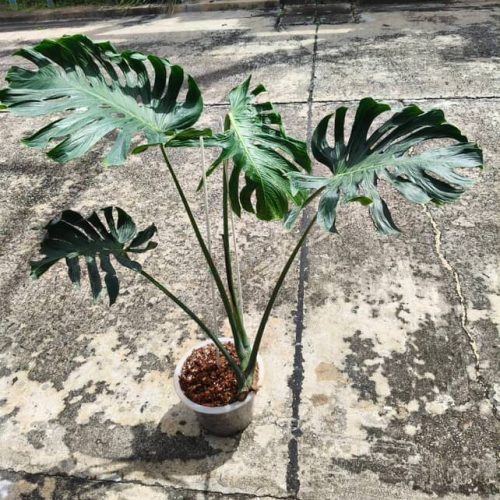
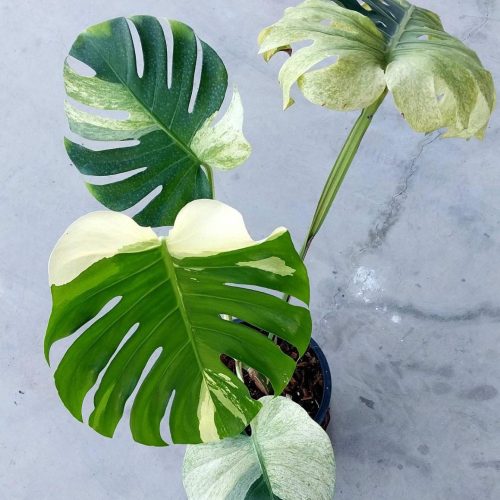



![12x Monstera Borsigiana Albo half leaves variegata [3-4 leaves]](https://greenboog.com/wp-content/uploads/2024/10/Monstera-Borsigiana-Albo-half-leaves-variegata-1-500x500.jpg)
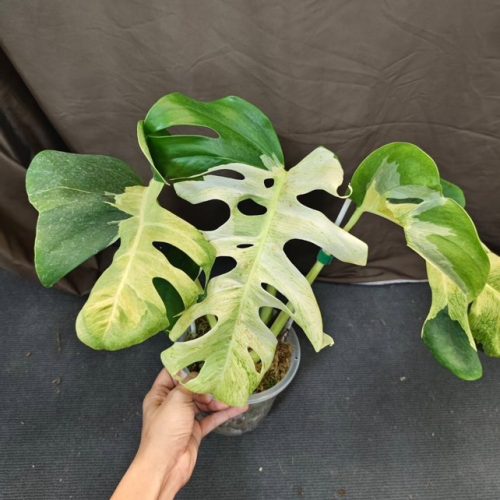

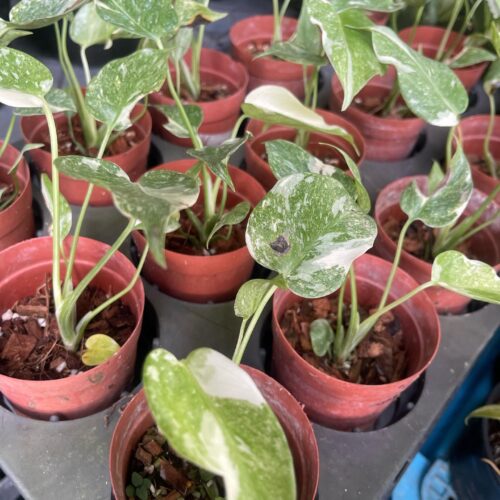
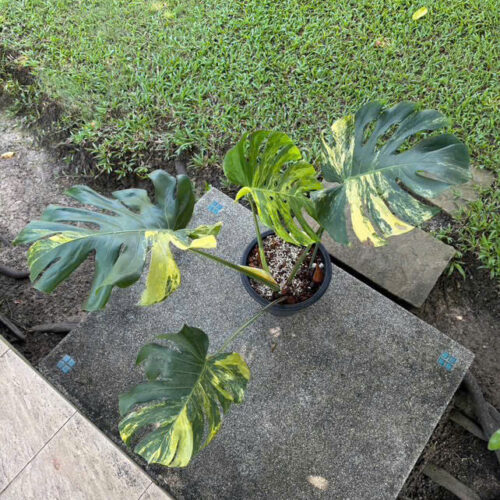
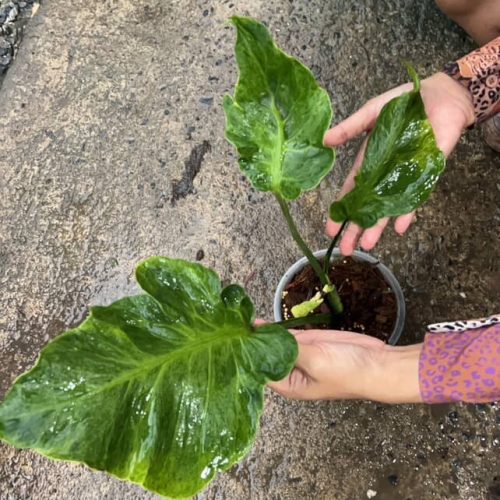
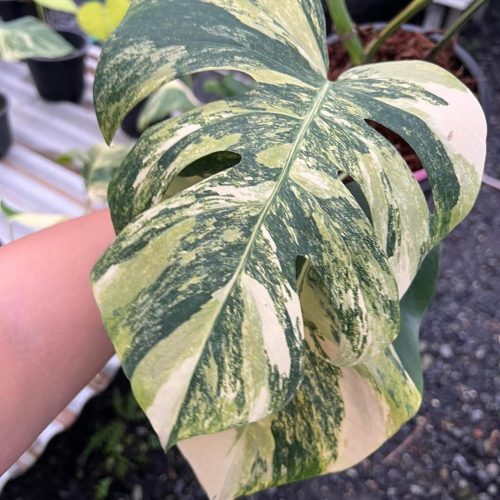

![10 Pots x Monstera Aurea Variegated / Mix Aurea tri color 3-4 leaves [well variegated]](https://greenboog.com/wp-content/uploads/2024/08/Monstera-Aurea-Tri-color-500x500.jpg)

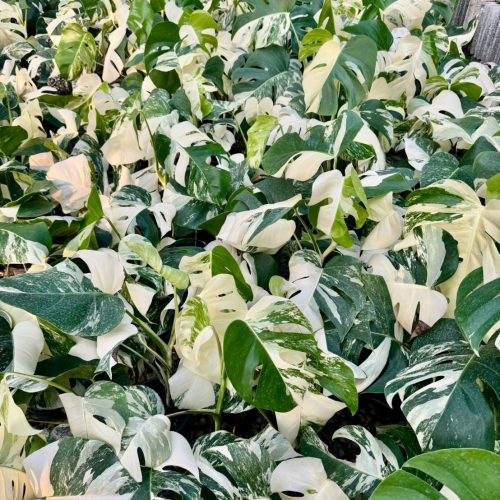
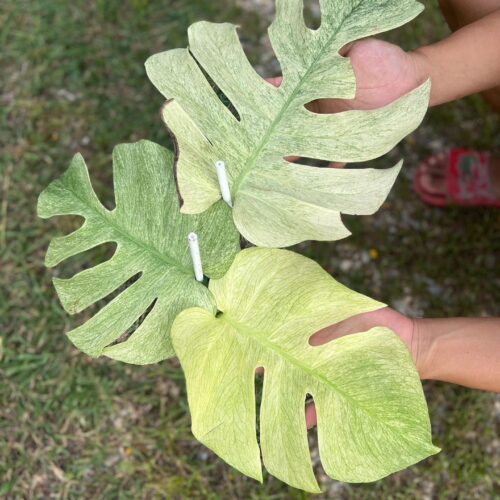
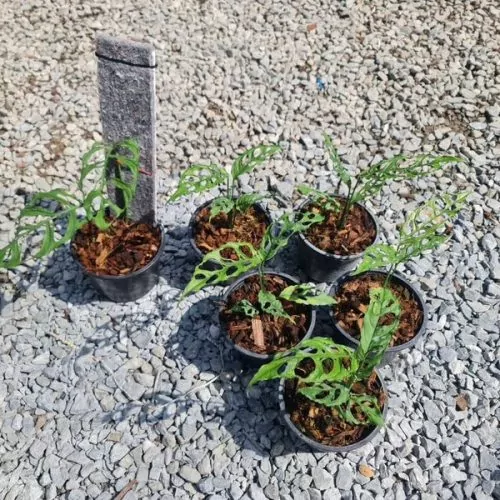
![[SALE] 10 Pots x Monstera Aurea Variegated 3-6 leaves [Medium size]](https://greenboog.com/wp-content/uploads/2025/01/Monstera-Aurea-variegated-4-6-leafs-500x482.jpg)

